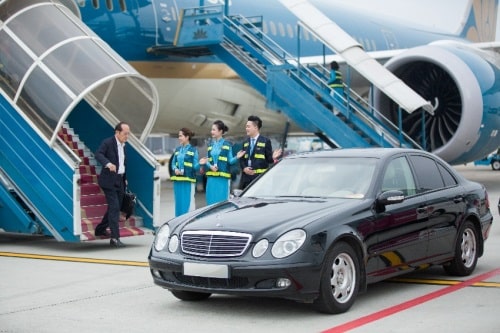

Location and Significance: Tan Son Nhat International Airport serves as the primary air hub for Ho Chi Minh City, Vietnam's largest metropolis. Situated just 6 kilometers north of the city center, this bustling airport connects Vietnam to the world. As the country's busiest airport, it plays a crucial role in Vietnam's tourism and business sectors, welcoming millions of visitors annually.
Historical Background: Originally built in the 1930s, Tan Son Nhat has a rich history spanning nearly a century. Initially serving as a key military airbase, it transitioned to civilian use in the 1950s. The airport has witnessed significant events in Vietnam's history, including its pivotal role during the Vietnam War. Over the decades, Tan Son Nhat has undergone multiple expansions and upgrades to meet the growing demands of international air travel.
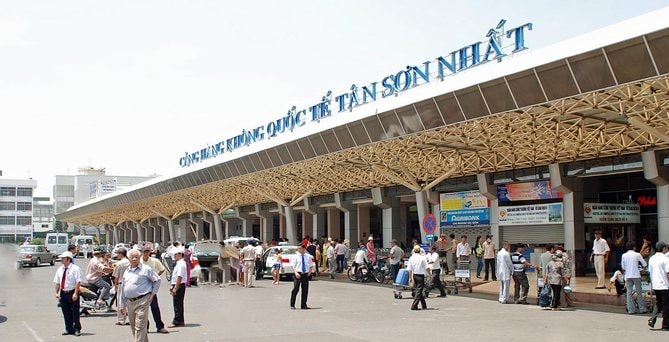
Terminals: Tan Son Nhat boasts two main passenger terminals. The domestic Terminal 1 efficiently handles internal flights, while the larger international Terminal 2 serves as the gateway for global travelers. Both terminals offer a range of services, from duty-free shopping to diverse dining options, ensuring a comfortable experience for all passengers.
Runways: The airport operates two parallel runways, capable of handling a wide range of aircraft. These runways, measuring 3,800 meters and 3,048 meters respectively, allow for simultaneous take-offs and landings, enhancing the airport's capacity and efficiency.
Airlines and Destinations: Tan Son Nhat is a hub for Vietnam's major carriers, including Vietnam Airlines, VietJet Air, and Bamboo Airways. It also welcomes numerous international airlines, connecting Ho Chi Minh City to major cities across Asia, Europe, and beyond.
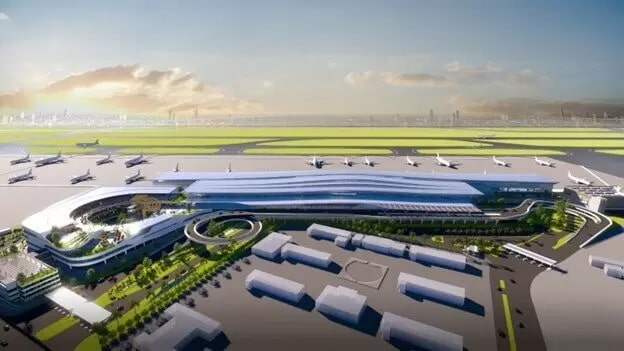

Lounges: Tan Son Nhat features several lounges for passengers seeking a quiet retreat. Business class lounges operated by Vietnam Airlines and other carriers offer comfortable seating, refreshments, and workspaces. Independent lounges like Orchid Lounge welcome all travelers for a fee, providing a range of amenities including showers and buffet meals.
Dining and Shopping: The airport houses a variety of dining options, from local Vietnamese cuisine to international fast-food chains. Cafes and bars are scattered throughout both terminals. For shopping, duty-free stores offer cosmetics, liquor, and local souvenirs. Convenience stores and bookshops cater to last-minute needs.
Wi-Fi and Other Amenities: Free Wi-Fi is available throughout the airport, keeping travelers connected. Charging stations for electronic devices are conveniently located in waiting areas. For families, nursery rooms provide a private space for infant care. Currency exchange counters and ATMs are easily accessible in both terminals.
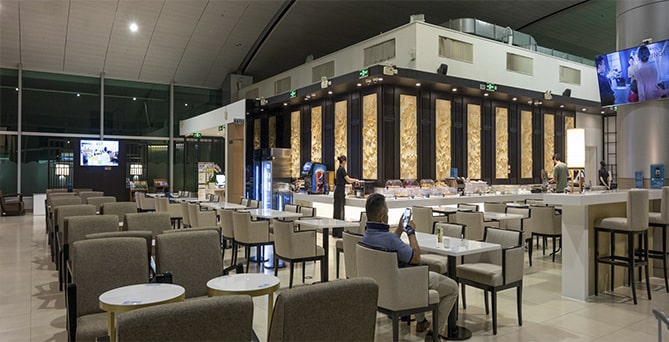
Air Traffic Statistics: Tan Son Nhat is Vietnam's busiest airport, handling over 40 million passengers annually. During peak hours, the airport manages up to 44 take-offs and landings per hour. Domestic flights account for roughly 60% of traffic, reflecting Vietnam's growing internal tourism and business travel.
Cargo Handling: The airport's cargo terminal plays a crucial role in Vietnam's export economy. It processes over 600,000 tons of freight annually, with facilities for perishable goods, dangerous materials, and live animals. Major cargo carriers like FedEx and DHL operate regular flights, connecting Vietnam to global supply chains. The airport's proximity to Ho Chi Minh City's industrial zones makes it a key logistics hub for the region.

| Initiative | Description |
|---|---|
| Noise Reduction Efforts | The airport has implemented a noise monitoring system to track and manage sound levels. Night-time flight restrictions help reduce disturbances during sleeping hours. |
| Sustainability Initiatives | Energy-efficient lighting systems have been installed throughout the terminals, cutting electricity consumption. A water recycling program helps conserve this vital resource. |

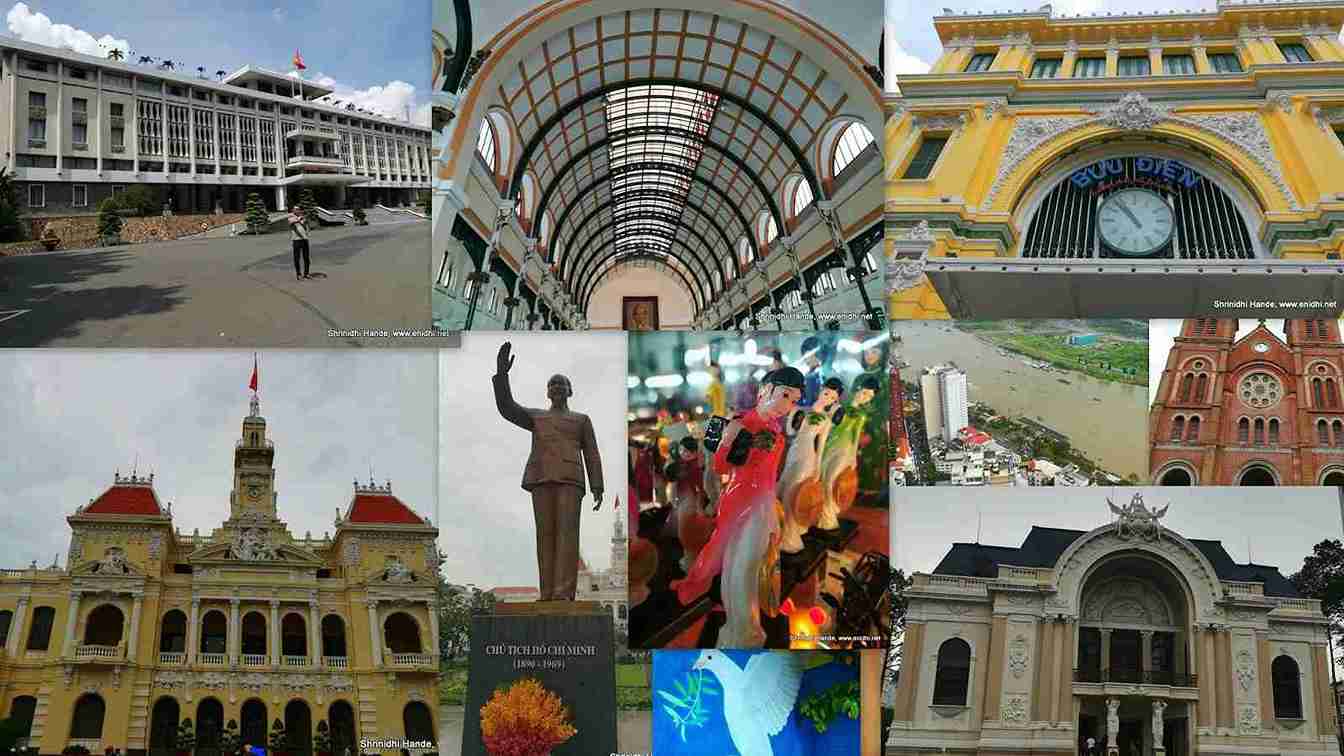
Check-in Procedures: Tan Son Nhat recommends passengers arrive at least 2 hours before domestic flights and 3 hours for international departures. Online check-in is available for many airlines, saving time at the airport. Self-service kiosks in the departure hall offer another speedy option. For oversized or special luggage, dedicated counters are available. Remember to have your passport and visa (if required) readily accessible.
Security Information: Security checks are thorough but efficient. Liquids, gels, and aerosols must be in containers of 100ml or less, placed in a clear, resealable plastic bag. Electronic devices larger than a smartphone may need separate screening. Prohibited items include sharp objects, firearms, and certain chemicals. It's advisable to check the latest security regulations before your trip, as rules can change.

Airport Authority Details: Tan Son Nhat International Airport is managed by the Airports Corporation of Vietnam (ACV). For general inquiries, contact the airport information desk at +84 28 3848 5383. The airport's official website provides real-time flight information and airport updates. For lost and found services, call +84 28 3848 5383 or visit the information counter in either terminal.
Emergency Services: In case of medical emergencies, first aid stations are located in both terminals. For urgent assistance, contact the airport's emergency hotline at (insert emergency number here). The airport works closely with local police and fire departments to ensure rapid response to any situation. Travelers are encouraged to familiarize themselves with emergency exit locations upon arrival at the airport.
Original Construction: Tan Son Nhat's roots trace back to the 1930s when French colonial authorities developed it as a small airfield. Initially spanning just 800 hectares, the airport served both civilian and military purposes.
Major Renovations and Expansions: The 1960s saw significant expansion, with the U.S. military enlarging the airport during the Vietnam War. Post-war, Tan Son Nhat underwent several modernization phases. The international terminal, completed in 2007, marked a major milestone in the airport's development.
Significant Events: Tan Son Nhat played a crucial role during the Fall of Saigon in 1975, facilitating large-scale evacuations. In recent years, it has welcomed world leaders and hosted international aviation conferences, cementing its status as a key regional hub.

Terminal Design Features: The international terminal showcases a wave-like roof, symbolizing Vietnam's coastal geography. Large glass walls allow natural light, creating an airy atmosphere. The domestic terminal, while more utilitarian, incorporates elements of traditional Vietnamese architecture in its façade.
Notable Architectural Elements: A standout feature is the airport's control tower, rising 57 meters and offering panoramic views of Ho Chi Minh City. The terminal interiors feature local artwork and sculptures, reflecting Vietnam's rich cultural heritage.

Operating Authority: Tan Son Nhat is managed by the Airports Corporation of Vietnam (ACV), a state-owned enterprise responsible for operating 22 airports nationwide.
Key Personnel: The airport director oversees daily operations, supported by departments handling air traffic control, security, and customer service. The management team regularly collaborates with airlines and government agencies to enhance airport efficiency.
Security Measures: Tan Son Nhat employs multi-layered security protocols. Advanced X-ray scanners and metal detectors are standard at all checkpoints. The airport has implemented biometric screening for enhanced passport control.
Emergency Response Capabilities: A dedicated fire station is located on-site, equipped to handle aviation-specific emergencies. Regular drills ensure staff readiness for various scenarios, from medical emergencies to potential security threats.
Smart Airport Initiatives: Tan Son Nhat has introduced smart gates for faster immigration processing. A mobile app provides real-time flight updates and indoor navigation assistance to passengers.
Self-Service Options: Self-check-in kiosks and bag drop facilities streamline the departure process. The airport is piloting facial recognition technology for a seamless, touchless travel experience.
Typical Weather Conditions: Ho Chi Minh City's tropical climate means hot, humid conditions year-round. The rainy season, from May to November, brings frequent afternoon showers.
How Weather Affects Operations: While generally resilient to weather, heavy monsoon rains can occasionally impact flight schedules. The airport's advanced drainage system helps minimize weather-related disruptions.
Past or Current Military Operations: Historically a key military airbase, Tan Son Nhat retains a section for air force operations. The Vietnam People's Air Force maintains a presence, though significantly reduced from wartime levels.
Shared Civilian-Military Use: The airport operates as a joint civil-military facility. Civilian and military traffic are carefully coordinated to ensure smooth operations for both sectors.
Contribution to Local Economy: Tan Son Nhat is a major economic engine for Ho Chi Minh City. It facilitates billions in trade annually and is crucial for Vietnam's tourism industry.
Employment Statistics: The airport directly employs over 20,000 people, with tens of thousands more in related industries. It's a significant source of skilled jobs in the region.
Industry Accolades: Tan Son Nhat has received recognition for its cargo handling efficiency. The airport has been awarded for its efforts in reducing carbon emissions in recent years, reflecting its commitment to environmental sustainability.
Customer Satisfaction Ratings: Passenger surveys consistently rate the airport highly for cleanliness and staff courtesy. Areas noted for improvement include reducing peak-hour congestion, which the airport management is actively working on.
Entry Requirements: Vietnam's visa policies vary by nationality. Many countries enjoy visa-free access for short stays, while others require visas on arrival or pre-arranged visas.
Customs Procedures: The airport uses a dual-channel system for customs declarations. Electronic customs forms are being phased in to speed up the process and reduce paper usage, making the experience more efficient for travelers.
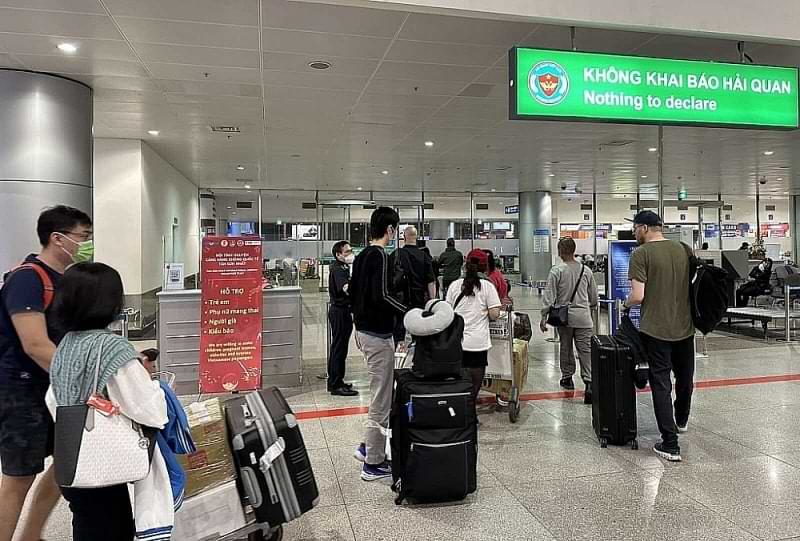
How to Report Lost Items: Tan Son Nhat Airport's Lost and Found office operates 24/7 to assist passengers. To report a lost item, visit the information desk in either terminal or call the dedicated hotline at [insert number]. Online reporting is also available through the airport's official website, allowing travelers to submit details about their lost belongings quickly and easily.
Retrieval Process: Once an item is reported or found, it's logged into a central database. Staff will contact you if a matching item is located. Claimed items can be collected from the Lost and Found office upon presenting proper identification. For items found on aircraft, the respective airline's lost and found service should be contacted directly.
Displays and Exhibitions: Tan Son Nhat features rotating art exhibitions throughout its terminals, highlighting both traditional and contemporary Vietnamese art. Permanent displays include intricate bamboo sculptures and large-scale paintings depicting scenes from Vietnamese history and folklore.
Cultural Events or Performances: During major holidays like Tet (Lunar New Year), the airport hosts cultural performances. Traditional music concerts and dance shows are occasionally held in the main concourse, offering travelers a taste of Vietnamese culture.
Services for Passengers with Disabilities: Tan Son Nhat is committed to providing accessible travel experiences. Wheelchair services are available free of charge and can be pre-booked or requested upon arrival. All elevators are equipped with Braille buttons and audio announcements.
Special Assistance Options: Dedicated lanes at security checkpoints accommodate passengers with reduced mobility. For hearing-impaired travelers, visual paging services are available. The airport offers escort services for unaccompanied minors and elderly passengers who require extra assistance.

Energy Efficiency Measures: Tan Son Nhat has implemented a range of energy-saving initiatives. LED lighting has been installed throughout the terminals, significantly reducing electricity consumption. Solar panels on terminal roofs contribute to powering certain airport operations.
Waste Management Programs: The airport operates a comprehensive recycling program, with clearly marked bins throughout the facilities. A water treatment plant processes and recycles wastewater for non-potable uses like landscape irrigation. The airport also encourages vendors to use eco-friendly packaging to reduce overall waste.
Executive Lounges: Several premium lounges cater to business and first-class passengers. The Orchid Lounge in Terminal 2 offers panoramic views of the runway, along with complimentary refreshments and workspaces. Pay-per-use options are available for all travelers seeking a more luxurious pre-flight experience.
Fast-Track Options: For a smoother journey, Tan Son Nhat offers fast-track services through security and immigration. This service can be pre-booked or purchased at the airport, subject to availability. Some airlines and credit card companies also offer fast-track access as part of their premium packages.
